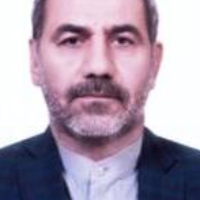Modeling of Iranian oak Regeneration in Zagros Forests using Artificial Neural Network Algorithm
Today, the use of modeling methods to predict and modeling of regeneration for different species in forest conservation and management plans is increasing. It is possible to predict the condition and density of forests in the future by forest regeneration modeling and based on that, adopted different management scenarios.
With regard to importance of the subject, in this study the regeneration rate of oak species in a part of oak forests of Manesht and Qalarang protected area-Illam province was estimated using artificial neural network (ANN) and environmental variables such as primary topographic properties, secondary topography, soil physical properties, soil chemical properties and forest structural characteristics as independent variables. For this purpose, various functions and models were evaluated. After sampling, 70% of the, oak regeneration samples was used as training samples to implement the ANN model and the remaining 30% of the data was used to evaluate the model results. Finally, the sensitivity of the oak regeneration model was analyzed.
The results showed that the artificial neural network with error standard error equal to 0.99 was able to estimate the oak regeneration in the study area. The results of sensitivity analysis showed that the highest R2 is related to the model with all input variables, which indicates the positive effect of all input parameters to the model, so that by removing each of the input variables, the accuracy of the model in predicting oak regeneration decreases. However, the results also showed that forest structural and soil chemical characteristics are the most important factors affecting oak regeneration in the study area. The least effect on oak regeneration in the prepared model are secondary topographic variables, which although had a positive role in predicting the regeneration. However, the effect of these variables was less than other variables. The results showed that about 21% of the study area has less than 100 regenerations per hectare. Also, more than 12% of the study area has more than 1200 regenerations per hectare.
In general, the simultaneous use of all primary and secondary topographic features, soil and forest structural characteristics increase the accuracy of regeneration modeling of Zagros oak forests. On the other hand, ANN due to its flexibility, allows the selection of the various variables according to the study area conditions and the available information, as a result, it increases the accuracy of modeling.
-
Evaluation of oak decline in relation to the diversity of woody species, soil properties and physiographic factors in southern Zagros forests
Mohamad Jafari, *, Mehdi Heydari, Javad Mirzaei, Nahid Jafarian
Journal of Arid Biome,


